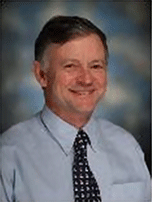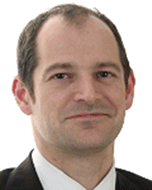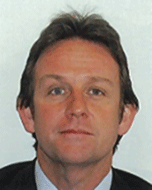True 3D—wide azimuth seismic comes of age onshore as well as offshore*
Gareth Williams A , Stéphan Midenet B and Tony Weatherall CA CGGVeritas Crompton Way, Manor Royal, Crawley, W. Sussex, RH10 9QN, UK. Email: gareth.williams@cggveritas.com
B CGGVeritas Rue de Leon Migaux, Massy, Paris, France. Email: stephan.midenet@cggveritas.com
C CGGVeritas 9 Serangoon Avenue North 5, Singapore 554531. Email: tony.weatherall@cggveritas.com
The APPEA Journal 50(2) 710-710 https://doi.org/10.1071/AJ09074
Published: 2010
Abstract
The advantages of recording a well-sampled, wider range of azimuths on seismic surveys are being seen in different geological settings worldwide. The success of wide-azimuth surveys has been well documented for sub-salt illumination in the deep water plays of the Gulf of Mexico. Multi-azimuth surveys have similarly shown improved S/N beneath the Messinian unconformity offshore Egypt. More recently, the benefits of improved sampling (and hence attenuation) of noise by dense, wide-azimuth surveys have been demonstrated onshore Oman.
Although the successful marine results have highlighted the benefits of true 3D or wide-azimuth surveys, land surveys have often been recorded with a wide range of azimuths for many years. The step-change occurring onshore is the dramatic increase in the trace density on wide-azimuth surveys. We are learning that one of the reasons that conventional land seismic data have often been viewed as noisy is that coherent energy, particularly near surface events, is grossly under-sampled.
Modern land recording techniques such as overlapping vibrator sweeps, single vibrator (point source) recording, multiple vibrator fleets and high channel systems allow us to record data much more efficiently. In turn, these enabling technologies allow us to obtain much improved seismic data quality via greatly increased sampling density. Moreover, recording geometries on this new generation of land supercrews provide trace densities that are many times higher than on marine surveys. The next step for marine wide-azimuth surveys may require a similar step-change in recording density in order to address difficult geologies that cannot be imaged with current recording techniques.
Keywords: wide azimuth, circle shooting, supercrews, marine seismic, land seismic, sub-salt

Gareth Williams has a PhD from Southampton University in the UK and also studied at CERN in Geneva, at Colorado University in the US as a Fulbright Scholar and at Imperial College in London as a postdoctoral fellow. He is currently Senior Vice President for Geoscience and Research at CGGVeritas and is based at the Crawley office in the UK. He has worked for Digicon, then Veritas DGC and now CGGVeritas for over 28 years. Gareth has published papers on a wide range of topics in seismic exploration. He is a former President of the EAGE. |

As a graduate engineer, Stéphan started his career at the French embassy in Washington DC. He joined CGG in 1998 as Quality Control Manager on land crews operating in Azerbaijan, Austria and Indonesia. Stéphan stayed in Indonesia for several years, first as Party Manager, then Party Chief before becoming Operations Supervisor and finally Country Manager. Stéphan returned to France in 2005 as a sales engineer, before taking over responsibility for the Land Sales and Marketing Division for the Eastern Hemisphere in 2007. He moved to Singapore in 2008 to become Senior VP Sales and Marketing for the Asia Pacific region. Since January 2010, he has been based in Massy where he runs the Land and Shallow Water Data Acquisition Business Line for the for the EAME and APAC regions. |

Tony graduated from Curtain University in 1985 with a Bachelor of Science in Geophysics. He started work as a processing geophysicist and later moved on to an oil company in Indonesia working on a 3D land transition crew in Kalimantan on the Mahakam Delta from 1997 to 1999. Before joining CGGVeritas in 2004 as a Country Manager in Australia, he was the Country Manager for Paradigm in Indonesia. Since January 2010, he has been based in Singapore as Senior VP Sales and Marketing for the Asia Pacific region for CGGVeritas. |
References
Cole, R.A., and French, W.S., 1985—A circular seismic acquisition technique for marine three-dimensional surveys. 17th annual Offshore Technology Conference, Houston, 6–9 May, 4864.Keggin, J., Widmaier, M., Hegna, S., and Kjos, E., 2002—Attenuation of multiple diffractions by multi-azimuth streamer acquisition. 64th European Association of Geoscientists and Engineers Conference, Florence, 27–30 May, extended abstracts, F039.
Keggin, J., Rietveld, W., Benson, M., Manning, E., Cook, P., Barley, B., and Page, C., 2007—Multi-azimuth 3D provides robust improvements in Nile Delta seismic imaging. 69th European Association of Geoscientists and Engineers Conference, London, 11–14 June, extended abstracts, C010.
Michell, S., Shositaishvili, S., Chergotis, D., Sharp, J., and Etgen, J., 2006—Wide azimuth streamer imaging of Mad Dog—have we solved the subsalt imaging problem? 76th Society of Exploration Geophysicists Conference, New Orleans, 1–6 October, expanded abstracts, 2905.
Moldoveanu, N., 2008—Circular geometry for wide-azimuth towed streamer acquisition. 70th European Association of Geoscientists and Engineers Conference, Rome, 9–12 June, extended abstracts, G011.
Sambell, R.H., Matheny, C.P., Al Mahrooqi, S.S.S., Al Abri, S.S.A., and Al Yarubi, S.A.H., 2009—Covering the South of Oman with dense WAZ data—a Super-crew delivers. 71st European Association of Geoscientists and Engineers Conference, Amsterdam, 8–11 June, extended abstracts, V011.
Wombell, R.J., Smith, R., Zwartjes, P., Van Dijk, T., Benjamin, N., Wah Hong, T., Khakimov, O., Cramp, R., McCarthy, A., and Bulteau, M., 2009—South Oman salt basin—high density wide-azimuth land seismic acquisition and processing, European Association of Geoscientists and Engineers subsalt imaging workshop, Cairo, 15–18 November, SS28.


